


Claude Arnulphy (1697 - 22 June 1786), also spelt Arnulphi, was a French painter, chiefly of portraits, based at Aix-en-Provence in the south of France.



Claude Arnulphy (1697 - 22 June 1786), also spelt Arnulphi, was a French painter, chiefly of portraits, based at Aix-en-Provence in the south of France.
Arnulphy is claimed to have been born either at Grenoble or at Lyons, but Aix is also a possibility. [1] He was the son of Charles Arnulphy, a painter at Paris, although originally from the County of Nice in the Italian Duchy of Savoy, by his father's marriage to Madeleine Prongey, and he spent his childhood years in the French capital city. He first trained as a painter in his father's studio, then went to Rome to study under Benedetto Luti (1666–1724), becoming principally a portrait artist. [2]
Arnulphy established himself in the city of Aix in about 1722, where he enjoyed a long artistic career and where many of his works survive. [3] He was the master of Jean-François Pierre Peyron, [4] and Antoine Gibelin (1739–1813), another native of Aix, also began to study art under Arnulphy.
His work has been compared with that of Hyacinthe Rigaud (1659–1743) and Nicolas de Largillière (1656–1746). [5]
His portrait of Thomas Mathews (pictured) is one of four surviving portraits he painted of officers of a Royal Navy fleet lying off Toulon between 1742 and 1744. Three of these are now in the National Maritime Museum at Greenwich. [6]
In February 1732, Arnulphy married Marguerite Aubaye, and they had ten children, of whom seven were sons. However, only one child, according to different sources a son named Joseph or François Arnulphy (died 1825) survived childhood. [2] [7]
In 1765, as the result of the Will of Honoré Armand de Villars, a new drawing school was established which became known as the Aix Drawing School (École de dessin d'Aix-en-Provence), with the painter Charles Marcel Aune as its first principal and Arnulphy as his deputy. In 1785, Aune resigned the headship of the school to travel to North America, and Arnulphy took over from him. However, being by then aged at least eighty-eight, he chose a successor in the shape of a much younger man, Jean-Antoine Constantin. [2]
Arnulphy also held various other public offices in Aix, including those of syndic and treasurer. [2] He died on 22 June 1786 and was buried the next day in the Récollets cemetery at Aix. [7] Constantin duly succeeded him as master of the école de dessin. [2]

Jacint Rigau-Ros i Serra, known in French as Hyacinthe Rigaud, was a Catalan-French baroque painter most famous for his portraits of Louis XIV and other members of the French nobility.

Aix-en-Provence, or simply Aix, is a city and commune in southern France, about 30 km (20 mi) north of Marseille. A former capital of Provence, it is the subprefecture of the arrondissement of Aix-en-Provence, in the department of Bouches-du-Rhône, in the region of Provence-Alpes-Côte d'Azur. The population of Aix-en-Provence is approximately 145,000. Its inhabitants are called Aixois or, less commonly, Aquisextains.

Antoine Coypel was a French painter, pastellist, engraver, decorative designer and draughtsman. He became court painter first to the Duke of Orléans and later to the French king. He became director of the Académie Royale. He was given the title of Garde des tableaux et dessins du roi, a function which combined the role of director and curator of the king's art collection. He was raised to the nobility by the French king. He is known for his history paintings, biblical, mythological and allegorical works, portraits and genre scenes.

Jean-Baptiste Descamps was a French writer on art and artists, and painter of village scenes. He later founded an academy of art and his son later became a museum curator.
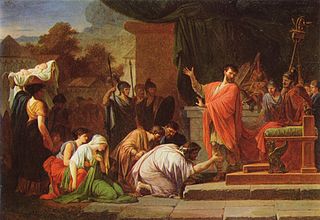
Jean-François Pierre Peyron, full name of Pierre Peyron, was a French Neoclassical painter.
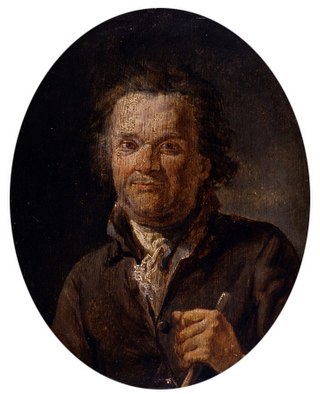
Jean-Antoine Constantin was a French painter.
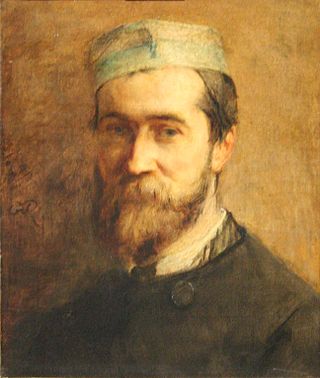
Émile Charles Joseph Loubon was a French painter, known for his panoramic landscapes of Provence, featuring figures and animals.
Georges Gimel, was a French expressionist painter of portraits, landscapes, mountain landscapes, still lifes and flowers. He was also a wood carver, lithographer, illustrator, set designer, sculptor, and enamel painter.
Pierre Tal-Coat was a French artist considered to be one of the founders of Tachisme.
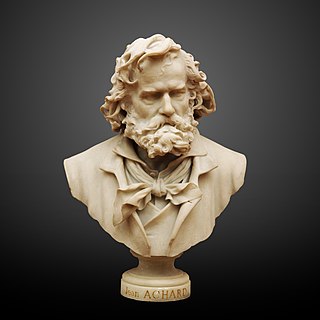
Jean Alexis Achard (1807–1884) was a French painter.

Alexis Grimou, also Grimoult or Grimoux (1678–1733) was a French portrait painter. He worked for an elite clientele and was called the French Rembrandt as he introduced the Northern European style of portrait painting in France. Many of his intimate portraits at half-lengths were influential on the development of 18th-century portrait painting in France. Portrait painters such as Jean-Honoré Fragonard and Jean-Baptiste Greuze were influenced by his work.

Robert Antoine Pinchon was a French Post-Impressionist landscape painter of the Rouen School who was born and spent most of his life in France. He was consistent throughout his career in his dedication to painting landscapes en plein air. From the age of nineteen he worked in a Fauve style but never deviated into Cubism, and, unlike others, never found that Post-Impressionism did not fulfill his artistic needs. Claude Monet referred to him as "a surprising touch in the service of a surprising eye".

Anders Osterlind, a French painter, was born in Lépaud (Creuse) on June 12, 1887. He died in Paris on January 5, 1960. He was the son of the painter Allan Österlind and the father of watercolorist Nanic Osterlind.

Nicolas-Henri Tardieu, called the "Tardieu the elder", was a prominent French engraver, known for his sensitive reproductions of Antoine Watteau's paintings. He was appointed graveur du roi to King Louis XV of France. His second wife, Marie-Anne Horthemels, came from a family that included engravers and painters. She is known as an engraver in her own right. Nicolas-Henri and Marie-Anne Tardieu had many descendants who were noted artists, most of them engravers.
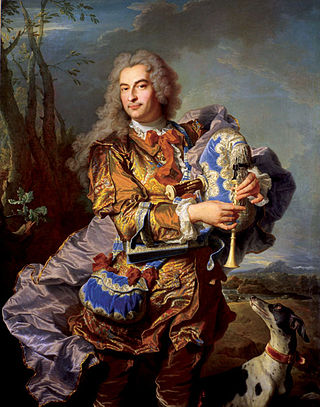
Gaspard de Gueidan (de Valabre) (1688–1767) was a French aristocrat and lawyer. He served as the Président à mortier of the Parliament of Aix-en-Provence.
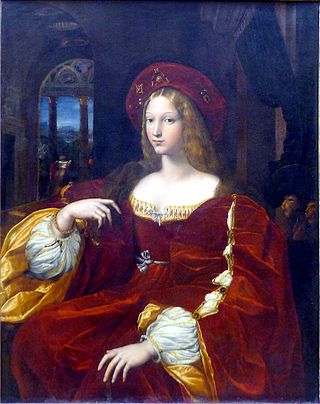
Portrait of Doña Isabel de Requesens y Enríquez de Cardona-Anglesola is an oil painting dated circa 1518 that was formerly believed to depict Giovanna d'Aragona. It has been variously ascribed to Raphael, Giulio Romano, or the school of Raphael; it is now usually taken to have been executed by Giulio Romano based on a sketch by Raphael and then altered by Raphael. The painting is now in the Louvre Museum in Lens.

Jean-Baptiste-Antoine Guillemet was a French renowned landscape painter and longtime Jury member of the Salon des Artistes Francais. He was one of the first 19th-century artists to paint modern life, and a pivotal figure in the transition from Realism to Impressionism.

Joseph Billioud was a 20th-century French historian. The historian Jacques Billioud was his son and Jean-Michel Billioud, a writer and Yves Billioud, a lawyer, his grandsons
Caroline Swagers was a French painter of miniatures.
Louis René Boulanger (1860–1917) was a French academic painter specialized in landscapes and still lifes.